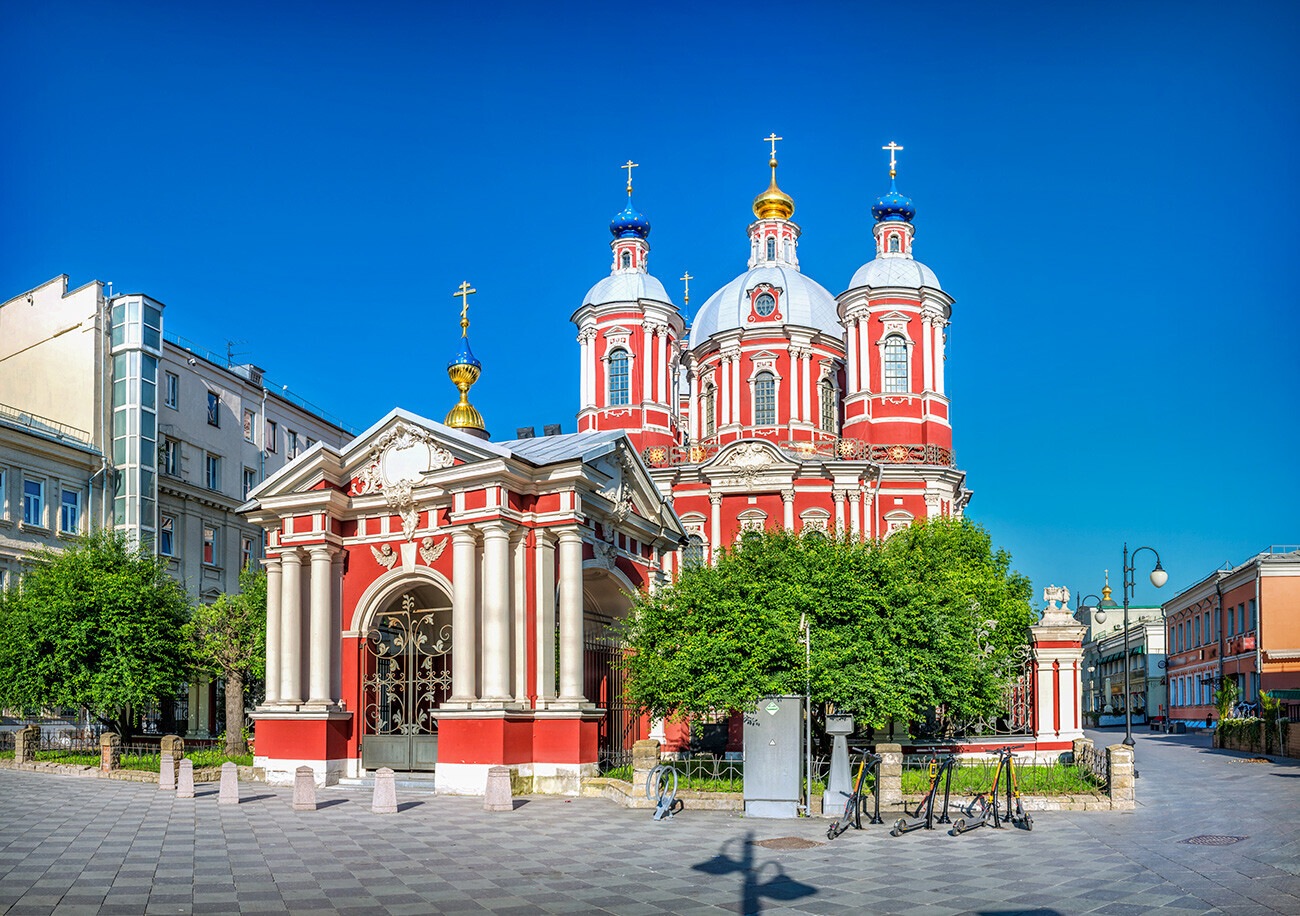

This church is one of the brightest and earliest examples of Baroque church architecture. Lev Naryshkin, uncle of Peter the Great, built it at his Fili estate, so art historians often call this style ‘Naryshkin’ or ‘Moscow’ Baroque. The decor there, however, is based on the traditions of Russian wooden architecture.

Martemyan Naryshkin, another uncle of Peter the Great, also built a Baroque church at his Trinity-Lykovo estate, which resembles the church in Fili. The snow-white building has the shape of a petal. As is typical of Baroque, there is abundant decoration, carved platbands and cornices, as well as an ornate openwork cross, which crowns the dome.

This is one of the most beautiful churches in Moscow and a symbol of the merchant district of Zamoskvorechye. The merchants themselves ordered construction of the Baroque cathedral in honor of martyr Clement, the patron saint of all those who travel by water.

The most important example of the style in Moscow is the Novodevichy Convent. The walls, the Church of the Assumption, the bell tower and the 17th century Transfiguration and Intercession churches in their red vestments are masterpieces of the ‘Moscow Baroque’. And, because of this, the monastery was included in the UNESCO World Heritage List.

In Russia, there were several Baroque styles. The Golitsyn princes also set their own fashion for it. The architecture of the ‘Golitsyn Baroque’ strongly departs from the Russian church tradition and presents completely new examples. For example, as this unique church in Dubrovitsy and its vertical-looking composition. The external appearance of the church is marked by an abundance of decoration and details, such as bas-reliefs, patterns, statues, pseudo-columns with floral capitals in the antique manner. The church is crowned not by the usual onion-shaped dome, but by a giant golden crown adorned with a cross.

In St. Petersburg, there was its own, more European version of Baroque, which also drew on the Russian tradition. Surprisingly, Peter the Great, who initially brought the style to Russia, did not like its excesses. Therefore, under him the ‘Petrine Baroque’ was formed, quite restrained in decor, but still extremely unusual in forms. It was in this style that one of the first churches of the city, the cathedral within the Peter and Paul Fortress, was built.

While Peter was quite ascetic, his daughter, Empress Elizabeth, loved the opulence of baroque decor. Under her rule, palaces with golden monograms and variegated moldings were built in St. Petersburg and in country residences. The empress' favorite architect, Bartolomeo Rastrelli, also designed the Smolny Cathedral of tender blue color for her, very similar to his other buildings, the Grand Catherine Palace in Tsarskoye Selo and the Winter Palace in St. Petersburg.

Another masterpiece of the Elizabethan Baroque in St. Petersburg is the first Russian naval cathedral built specifically for naval servants. It was designed by architect Savva Chevakinsky, who was also behind the buildings of the Admiralty Colleges, the main administration of naval affairs.

Baroque variations also appeared in different parts of the country. Having seen the luxurious cathedrals in the capitals, merchants and officials from the provinces ordered similar buildings in their regions. For example, in the Russian North in the 18th century, the ‘Totma Baroque’ was born. In the city of Totma, there are several churches of a characteristic style. Their main distinguishing feature is “cartouche”, oval moldings in the form of scrolls and curls on the facade of the church.

Siberia also had its own ‘Siberian Baroque’, which, due to the proximity of Asia, absorbed oriental and Buddhist motifs, such as arches in the form of tongues of flames, wheels of dharma, Buddhist stupas and lotus flowers.
Dear readers,
Our website and social media accounts are under threat of being restricted or banned, due to the current circumstances. So, to keep up with our latest content, simply do the following:
If using any of Russia Beyond's content, partly or in full, always provide an active hyperlink to the original material.
Subscribe
to our newsletter!
Get the week's best stories straight to your inbox